1952 Jaguar XK120M FHC (Fixed Head Coupe)
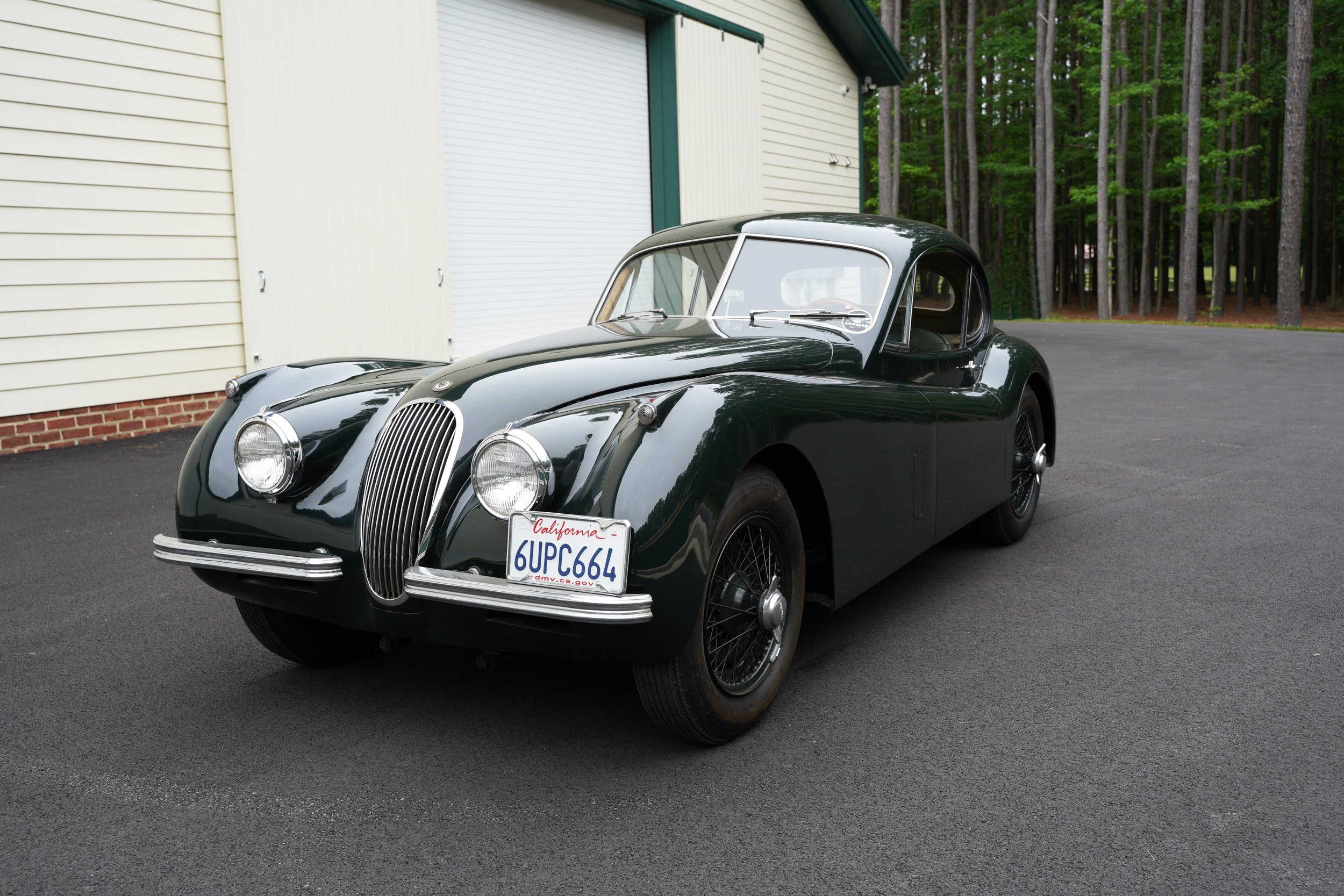
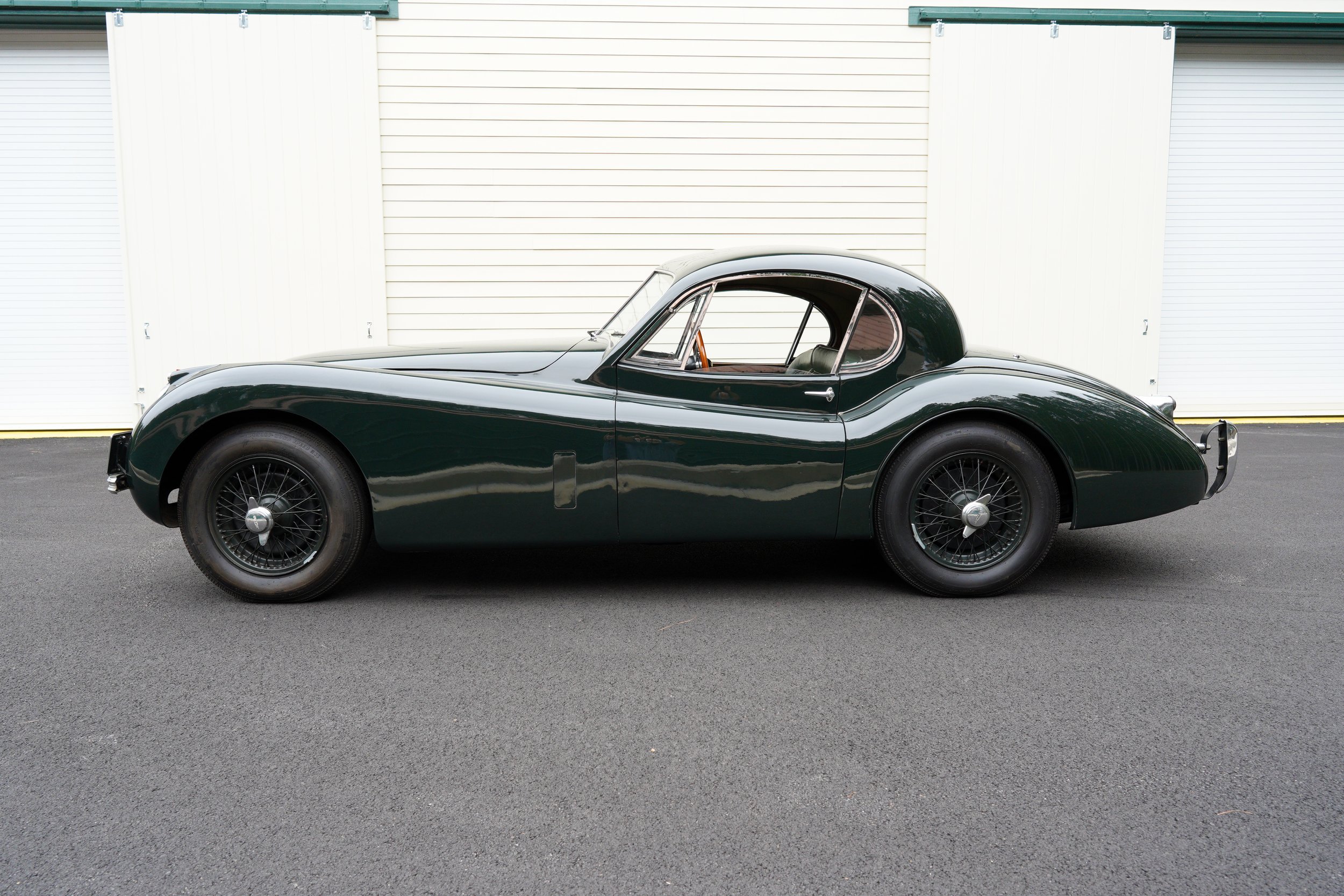
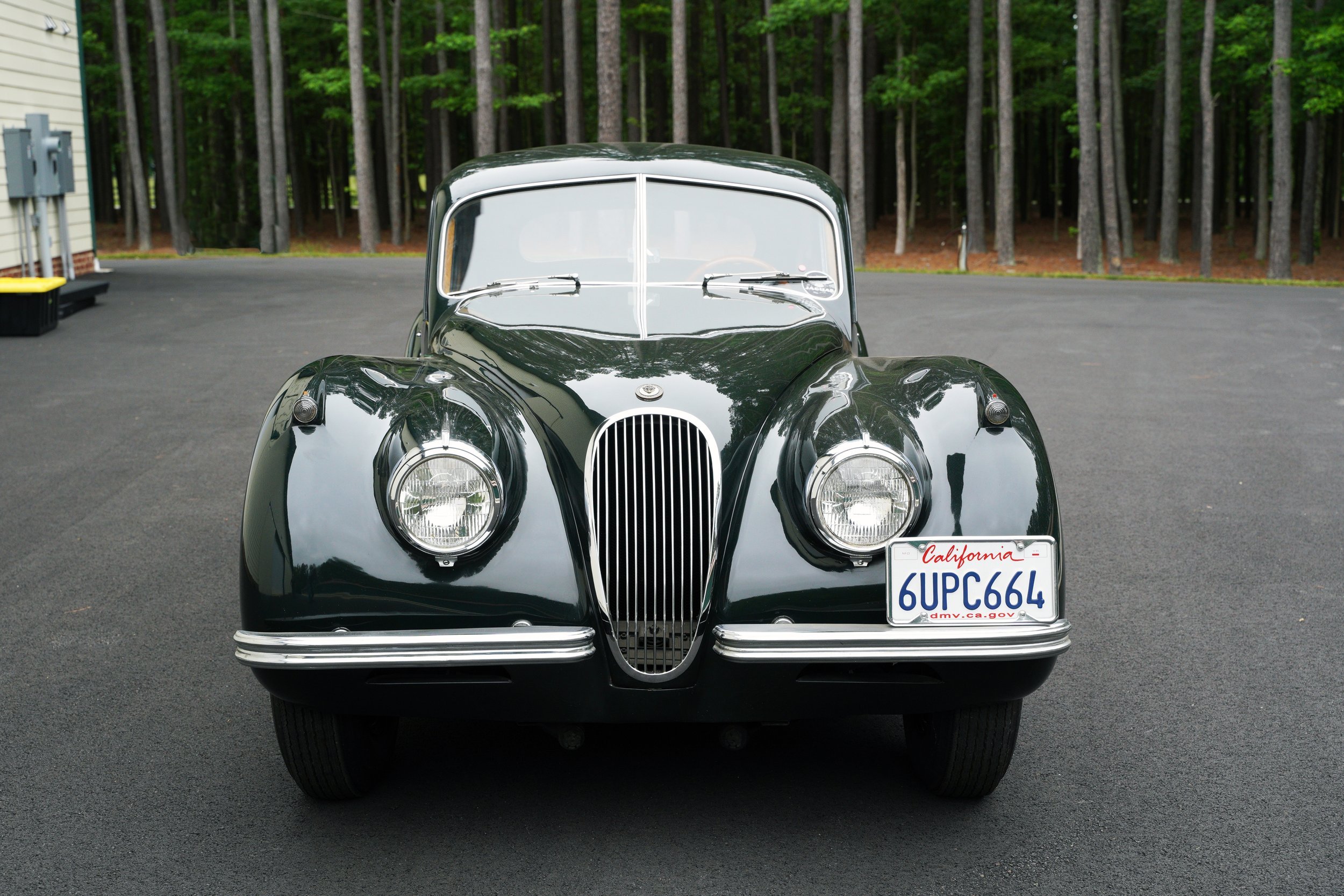
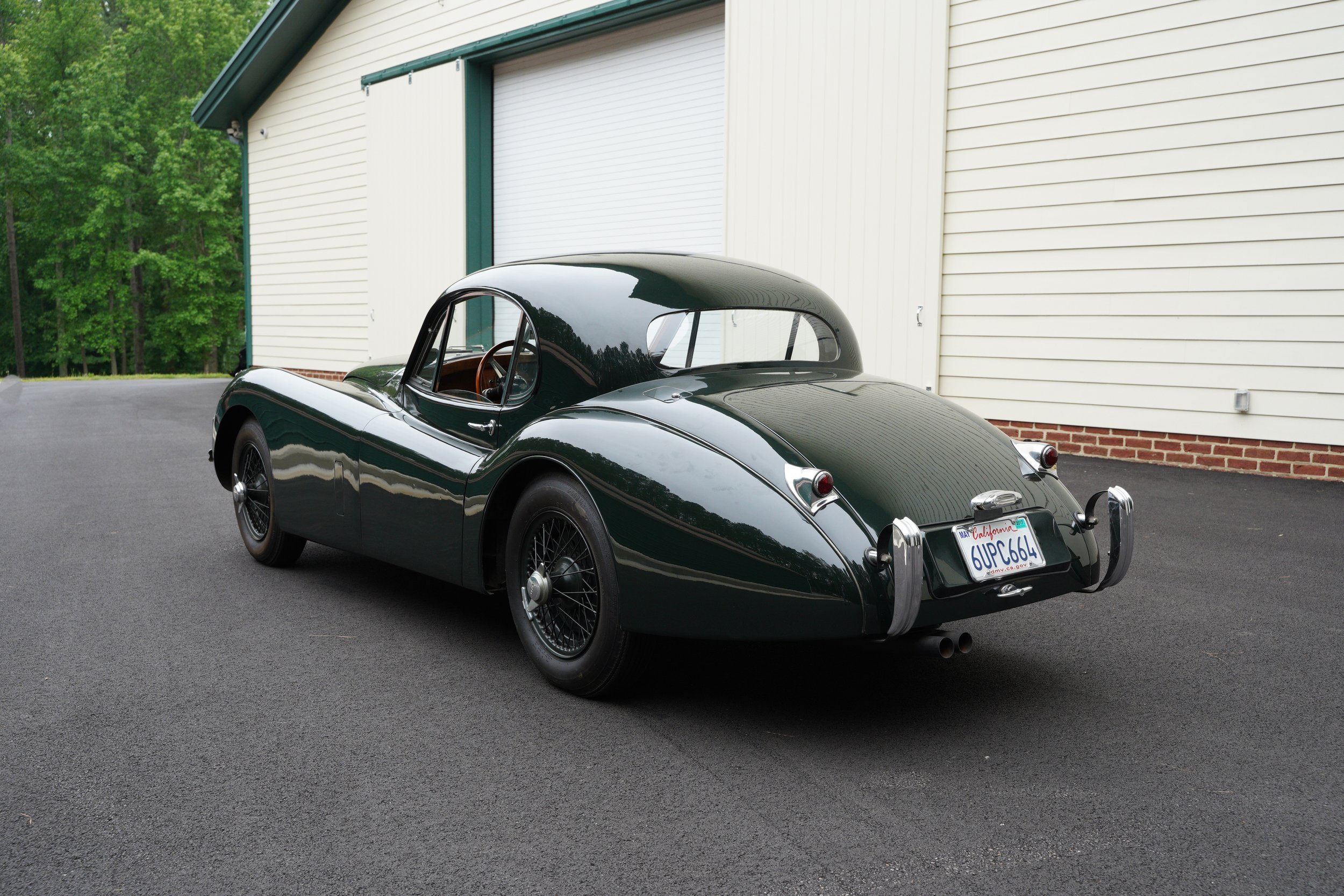
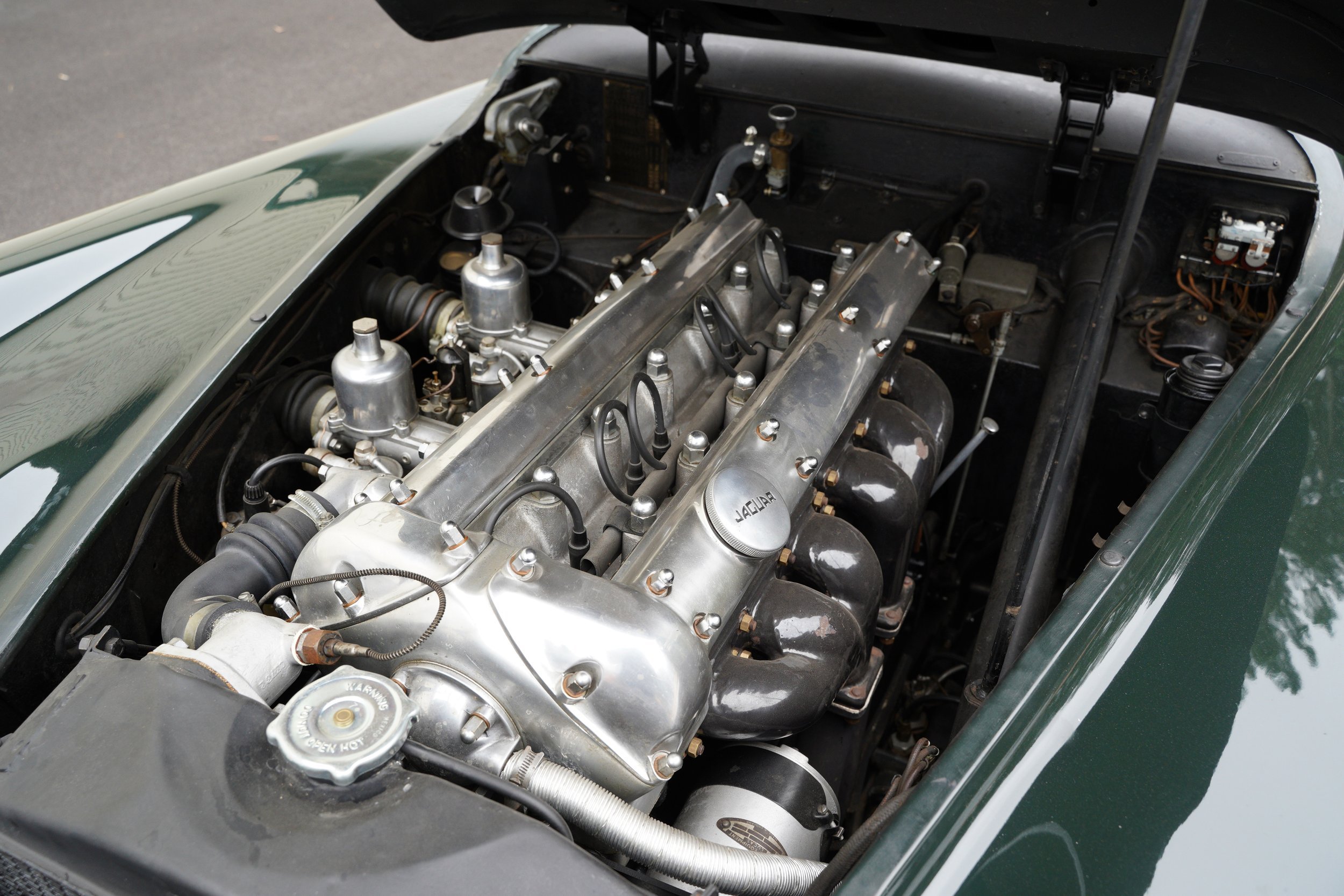
Fastest production car when introduced.
3.4-liter twin-cam 6-cylinder engine.
Flowing body styling aided aerodynamics.
Highly desired sports car then, and now!
This beautiful Jaguar XK120M fixed-head coupe in dark British Racing Green represents an advanced engine design mated to a beautiful and aerodynamic body style that gained wide appeal in the US immediately following World War 2. When first introduced at the London Auto Show in 1948, only 248 were planned to be built, all hand-formed aluminum on an Ash frame. The dual-cam 3.4-liter engine had an aluminum cylinder head, hemispherical combustion chambers and dual SU carburetors and was very advanced for a production vehicle of the post-war era. The car had the look and sounds of the powerful British aircraft that had won the war for England.
During World War 2, the Jaguar factory concentrated on supporting the war effort, but in the background, founder William Lyons and chief engineer William Heynes stayed busy working on a new engine for use in sports and race cars. Jaguar had not built any sports cars since production of the Jaguar SS model in 1939, but the new XK120 had dramatically different styling from any previous British offering. The XK120 was low and lean and the front and rear fenders integrated well into the bodywork giving the car a sleek aerodynamic shape. Lyons and his body team made the prototype body in under two weeks, borrowing heavily from the swooping Art Deco curves of pre-war French and Italian designers. The XK120 was so named as it had eclipsed the 120-mph mark, reaching nearly 134mph in time trial tests, albeit with the windshield removed. Jaguar could proudly say that the car was more than capable of the advertised speed.
By 1950, the demand for the car grew, despite the lack of high-octane fuel in Europe. To meet demand while maintaining a price point below $4000, Jaguar switched production to a steel body and frame to aid manufacturing and control costs. 12” hydraulic drum brakes at each wheel were utilized but were marginally effective given the speed of the car. Special versions of the XK120 found their way to the racetrack, and with lightweight alloy bodywork, the race version known as the “C-Type” or Competition model won the 24 hours of LeMans on its first try in 1951. The car on display shares a cylinder head design with the “C-Type” and carries the “M” designation to show its performance pedigree.
Much of the car’s appeal is due to its stylish body design. In the late 1930s custom coach builders of Europe made dramatic automotive statements with swooping art deco styling, and seeing that trend continuing post-war, the Jaguar marque dropped running boards and squared off bodies in favor of rear wheel spats and flowing curves throughout their line-up. Although the XK120 looked like a custom-bodied sports car, it was simply a landmark example of engineering and style for the new post-war enthusiast.
Despite the radical body and the high-output engine, the underpinnings of the XK120 still employed technologies carried over from the 30’s. The front suspension had independent torsion bars, but the rear simply used semi-elliptical leaf springs with a solid axle. Circulating ball steering guided the wheels which were either Chrome steel wire spoked or solid steel Rudge wheels. The knock-off style wheels on this later model painted black, made the standard rear wheel spats of earlier models impractical for tire changes and punctures.
The XK120 was the first version of the very successful XK models, giving way to the XK140 in 1955 and subsequently, the XK150 in the late 50’s. The powerful and well-designed straight 6 from the XK car, also made its way into the Jaguar Mk 7 Saloon giving the larger and more staid touring car the heart of a sports racer. In its 5 years of production, over 12,000 examples of the XK120 were built, many imported to the US. This car was purchased as a daily driver by Dr Nicholas Begovich, an electrical engineer and physicist who greatly appreciated advanced engineering in his vehicle choices. It was acquired by the Audrain Collection in 2020 along with other engineering marvels owned by Dr. Begovich.
XK120 Specifications:
Engine: 3442cc (3.4 L) Double Overhead Cam Straight 6, Twin SU carburetors; 4-speed manual transmission
Performance: Top Speed 121 mph, 0-60mph 8.9 seconds
Horsepower: 160 hp (Standard engine) 220 hp Competition model
Curb Weight: 3240 lbs

